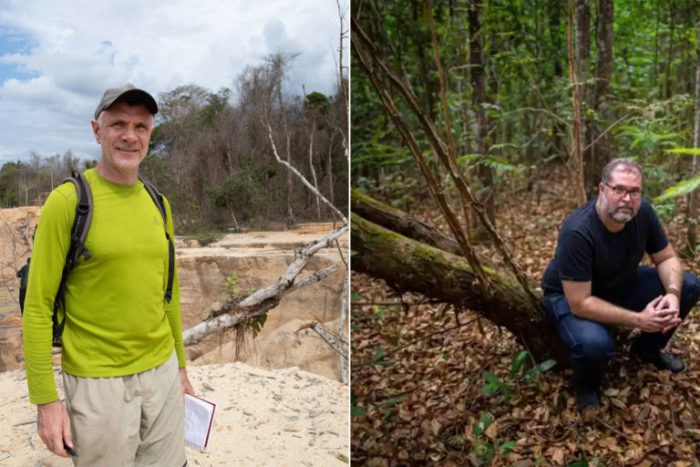- Brazilian police reported on June 15 that they had found the bodies believed to be those of Brazilian Indigenous defender Bruno Pereira and British journalist Dom Phillips deep in the western Amazon.
- The bodies were found not far from where the pair disappeared on June 5, in the Vale do Javari region, considered the most violent region of Brazil, where criminal groups vie to seize land occupied by Indigenous and traditional communities.
- Similar conflicts occur all over the Amazon, with some land grabbers admitting that they will, if necessary, use violent methods to achieve their goals.
- The Brazilian Senate has launched an investigation into the disappearance of Pereira and Phillips, but observers say it’s unlikely to deliver the far-reaching change required to tackle the violence.
This article was first published on Mongabay on 20 June 2022. Since then the bodies have been identified as those of Dom Phillips and Bruno Pereira. Eight suspects have been identified, of whom three are under arrest.
The Guardian newspaper published a moving tribute from Global Environment Editor Jonathan Watts, who was a personal friend of Phillips: ‘There is a war on nature – Dom Phillips was killed trying to warn you‘. A further article from São Paulo correspondent Andrew Downie, was headed ‘Bolsonaro’s fingerprints are all over this’: how president’s war on Amazon played part in double killing‘.
Authorities in Brazil have uncovered the bodies believed to be those of Dom Phillips, a British journalist, and Bruno Pereira, a prominent Indigenous rights defender. The discovery, on June 15 in the Vale do Javari region of western Brazil, comes 10 days after the pair were reported missing in the Amazon.
The Vale do Javari region, which includes a massive Indigenous reserve of the same name, lies in Amazonas state and was recently dubbed the country’s most violent region, where illegal loggers, poachers and drug traffickers vie to seize land from, or plunder the resources of, the traditional riverine communities and Indigenous groups living there.
The Vale do Javari Indigenous Territory, the second-largest in Brazil, covering 85,000 square kilometres (33,000 square miles), is home to 6,000 Indigenous people. It also has the largest number of isolated Indigenous groups anywhere in the world, believed to number about 17, who have had very little to no contact with the outside world.
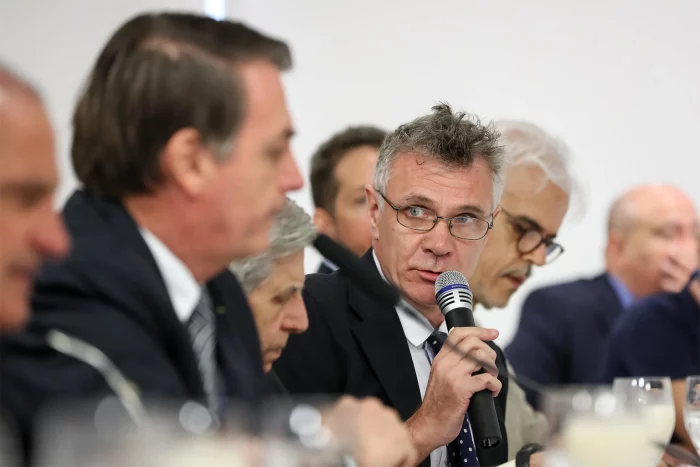
Pereira previously headed the office dealing with isolated Indigenous groups under Funai, the federal government agency for Indigenous affairs. He was a staunch believer that these groups should only be contacted as a last resort, although he did head an expedition into the Vale do Javari in 2019 to ease tension between Indigenous groups, including one isolated group, that was threatening to erupt into violence.
That expedition came in the early months of the administration of Jair Bolsonaro, before the president, notorious for his hostility toward Brazil’s Indigenous peoples, had time to restructure Funai. Since then, he has cut its budget drastically and undermined its authority. Soon after his return from the Vale do Javari, Pereira was dismissed from his post, in a move that was widely seen as politically motivated.
But Pereira remained active in the Vale do Javari region. In 2011, the federal government had created an agro-extractive project to allow 200 riverine families to sustainably fish pirarucu, a giant freshwater fish much in demand from restaurants. But the government abandoned the project after a few years, and the impoverished families came under the influence of criminal organizations keen to buy fish and game — some of it poached from the nearby Indigenous reserve.
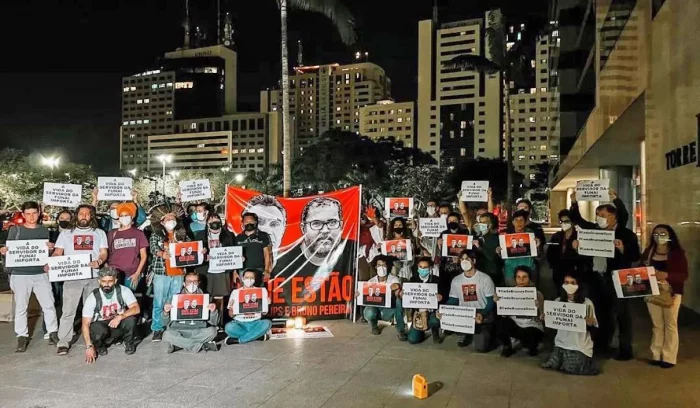
Working with the Union of the Vale do Javari Indigenous Peoples (UNIVAJA), Pereira tried to revive the fishing project and help the Indigenous communities defend themselves. This reportedly caused conflict with the criminal groups and some local people working with them. Police say they suspect this conflict may have led to the deaths of Pereira and Phillips.
Dom Phillips, a British journalist who earlier in his life had reported on rave music, became a passionate defender of the Amazon forest after a trip to the region. Horrified by the devastation, he traveled widely, often with Pereira, to collect material. He took a year off to do research for a book he was writing “How to Save the Amazon.” Married to a Brazilian, he had two young children.
There is considerable tension between Funai and UNIVAJA, which became evident in the hunt for the missing men. On June 10, five days after Phillips and Pereira had gone missing, Funai issued a press release in which it accused UNIVAJA of spreading “misinformation” and said that neither individual had been authorized to enter the Indigenous reserve. On June 14, a day before police confirmed the discovery of the bodies, a federal judge in Amazonas state ordered Funai to retract the accusations it had made against UNIVAJA and to send more police to the region to ensure the safety of government employees and Indigenous people.
See also: The war on journalists and environmental defenders in the Amazon continues
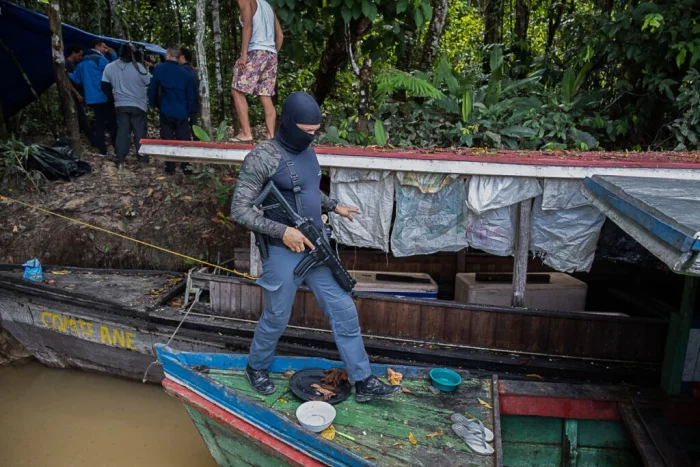
No isolated case
Such violent conflicts are no isolated event in the Amazon. The Catholic Church-affiliated Pastoral Land Commission (CPT) recently published a report that it had recorded 1,768 rural conflicts and 35 killings in 2021. Almost half (49.9%) of the conflicts occurred in the Legal Amazônia region, the vast area that includes the entire Brazilian Amazon and parts of the Cerrado savanna and Pantanal wetland. The CPT told Mongabay by email that the Vale do Javari region alone was the site of at least 25 rural conflicts, with many going unreported.
Local criminal groups, organized by illegal loggers, drug traffickers and land grabbers, are believed to be responsible for many of the conflicts. Mongabay encountered one such group in April 2017, when it interviewed Agamenon da Silva Menezes, a notorious, alleged land grabber who has illegally cleared thousands of hectares of standing forest in the north of Pará state.
Mongabay spoke to Agamenon in his office in the hot and dusty town of Novo Progresso, on the BR-163 highway that links Santarém, a port on the Amazon River, to Cuiabá, the capital of Mato Grosso state, considered the country’s breadbasket. At the time, he was involved in a conflict with landless peasants, who had occupied a plot of land beside the BR-163. Agamenon was keen to evict the settlers and openly admitted in the filmed interview with Mongabay that he planned to use hired thugs to do so.
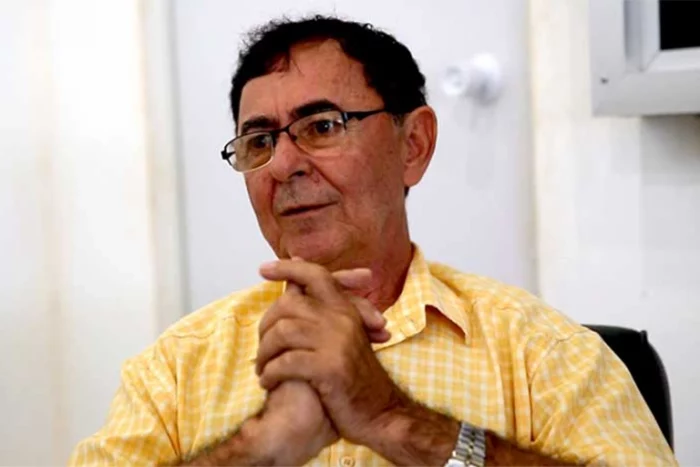
“If they [the settlers] leave on their own accord, fine. If they won’t go, we make them,” he said in Portuguese. “We do what it takes. If they use clubs against us, we use clubs. If they use knives, we use knives. If they use dogs, we use dogs. The way it is done depends on them, but in the end we get them out.”
The following day, a group of six armed men attacked the landless peasants’ camp, firing shots in the air. No one was injured and the settlers believed the gunmen only intended to intimidate them. But the threats escalated and eventually the settlers were evicted. Their leader, Aloisio Sampaio, known as Alenquer, a trade union activist, continued to criticize Agamenon after the eviction, and was killed in broad daylight in his home in Castelo dos Sonhos municipality in October 2019, just days before Bolsonaro won the election.
Agamenon isn’t a cattle rancher. His business is to take over vast stretches of forest and clear the vegetation. He then sells the land, now ready to be planted with grass, to ranchers, making a huge profit. A local rancher told Mongabay that “Standing forest is almost worthless. Once it is cleared of vegetation, it increases in value 100 or 200 times.” Agamenon has been prosecuted several times, but has never been jailed.
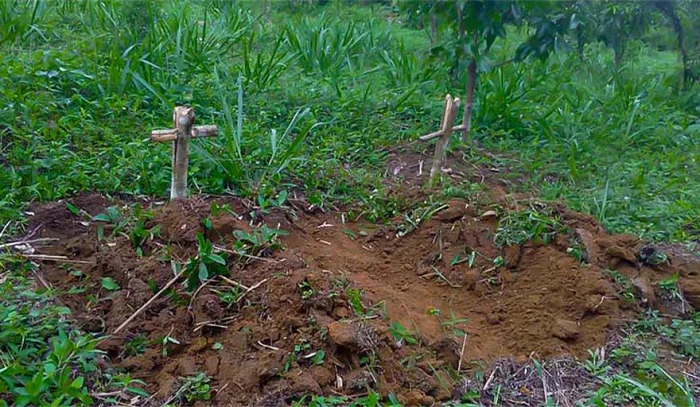
On other occasions, the criminal groups succeed in evicting rural activists by threatening to kill them. Osvalinda Alves Pereira, a rural community leader in Trairão in Pará state, worked for 10 years developing an agroforestry project for local families to get them out from under the control of illegal loggers. The loggers threatened Osvalinda, even going as far as digging mock graves at the back of her house. Eventually, as Osvalinda told Mongabay in 2020, she had no option but to leave.
Unlike the other deaths, the apparent killing of Pereira and Phillips has been covered extensively by the international media, likely because Phillips was a foreign journalist. The Brazilian Senate has reacted quickly, setting up a commission to investigate what happened to them and other cases of violence in the Amazon. However, few observers expect real change. The international interest may lead to the prosecution of those charged with killing Pereira and Phillips, but analysts say it will achieve little else.
Susanna Bettina Hecht, director of the Center for Brazilian Studies at the University of California, Los Angeles, said: “The international outcry may lead to the prosecution of those charged with Pereira’s and Phillips’ murder. In the case of earlier martyrs like that of rubber tapper leader Chico Mendes and land rights activist Dorothy Stang, there were real shifts in policy and politics with the implementation of new land rights and protections. But those were far different times, and in the current highly profitable vortex of clandestine economies, resource plunder and land grabbing in the Javari Valley, it is unlikely that the government will implement the profound changes needed to end violence in the Amazon.”
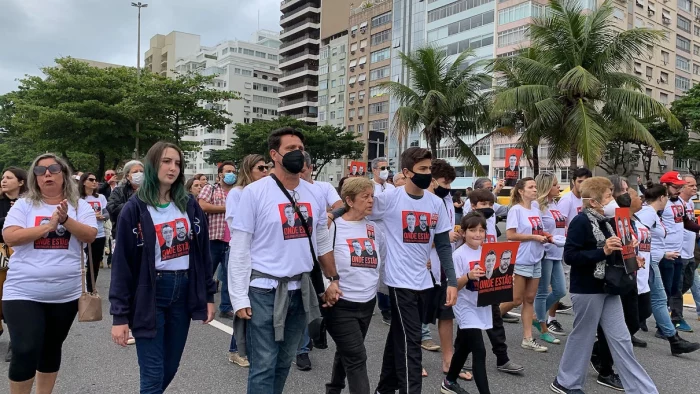
Banner image: British journalist Dom Phillips interviews Ashaninka Indigenous people in the northern state of Acre as part of research for the book he was planning on how to save the Amazon. Image courtesy of Wewito Ashaninka.
See Mongabay-Brasil editor Karla Mendes’s commentary about these events and the plight of journalists here:
The war on journalists and environmental defenders in the Amazon continues (commentary)
